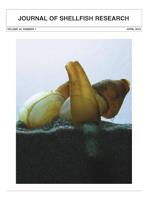In Washington state, commercial culture of geoducks (Panopea generosa) involves large-scale out-planting of juveniles to intertidal habitats, and installation of PVC tubes and netting to exclude predators and increase early survival. Structures associated with this nascent aquaculture method are examined to determine whether they affect patterns of use by resident and transient macrofauna. Results are summarized from regular surveys of aquaculture operations and reference beaches in 2009 to 2011 at three sites during three phases of culture: (1) pregear (-geoducks, -structure), (2) gear present ( geoducks, structures), and (3) postgear ( geoducks, -structures). Resident macroinvertebrates (infauna and epifauna) were sampled monthly (in most cases) using coring methods at low tide during all three phases. Differences in community composition between culture plots and reference areas were examined with permutational analysis of variance and homogeneity of multivariate dispersion tests. Scuba and shoreline transect surveys were used to examine habitat use by transient fish and macroinvertebrates. Analysis of similarity and complementary nonmetric multidimensional scaling were used to compare differences between species functional groups and habitat type during different aquaculture phases. Results suggest that resident and transient macrofauna respond differently to structures associated with geoduck aquaculture. No consistent differences in the community of resident macrofauna were observed at culture plots or reference areas at the three sites during any year. Conversely, total abundance of transient fish and macroinvertebrates were more than two times greater at culture plots than reference areas when aquaculture structures were in place. Community composition differed (analysis of similarity) between culture and reference plots during the gear-present phase, but did not persist to the next farming stage (postgear). Habitat complexity associated with shellfish aquaculture may attract some structure-associated transient species observed infrequently on reference beaches, and may displace other species that typically occur in areas lacking epibenthic structure. This study provides a first look at the effects of multiple phases of geoduck farming on macrofauna, and has important implications for the management of a rapidly expanding sector of the aquaculture industry.
How to translate text using browser tools
1 March 2015
Effects of Geoduck (Panopea generosa Gould, 1850) Aquaculture Gear on Resident and Transient Macrofauna Communities of Puget Sound, Washington
P. Sean McDonald,
Aaron W. E. Galloway,
Kathleen C. McPeek,
Glenn R. Vanblaricom
ACCESS THE FULL ARTICLE
<
Previous Article
|

Journal of Shellfish Research
Vol. 34 • No. 1
March 2015
Vol. 34 • No. 1
March 2015
aquaculture effects
benthic community
geoduck
habitat provision
macrofauna
Panopea generosa
press disturbance




